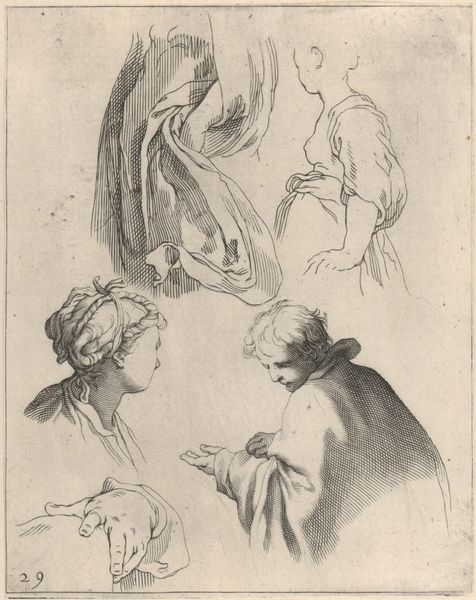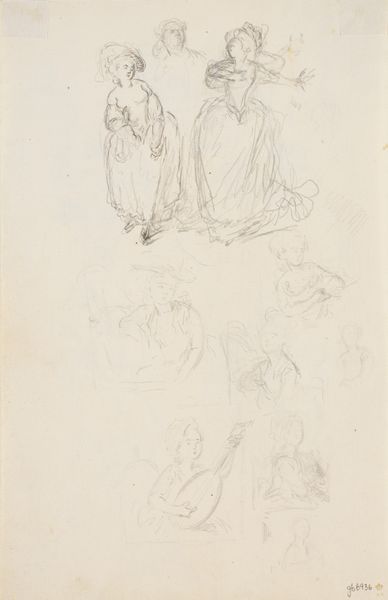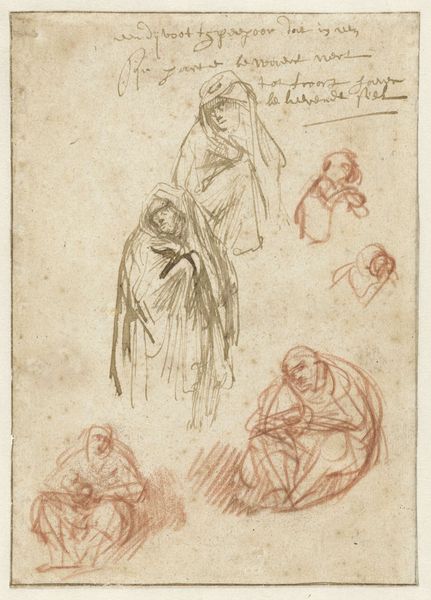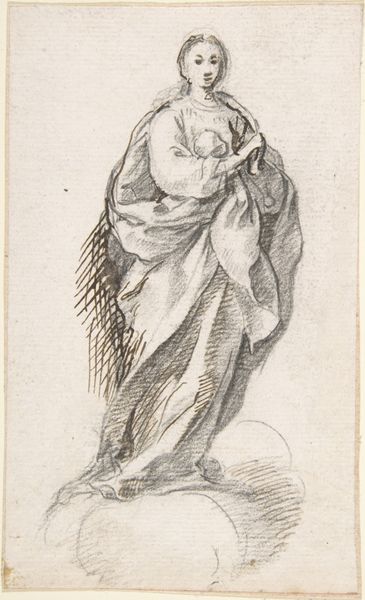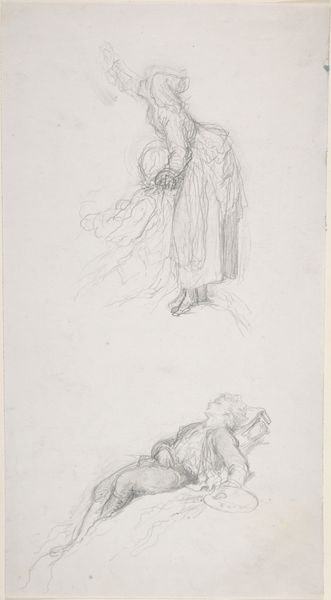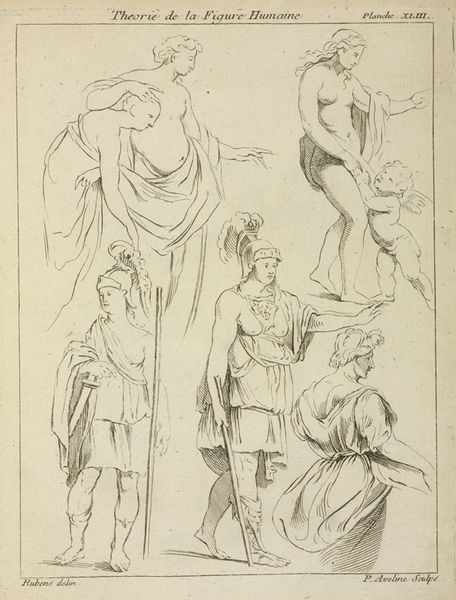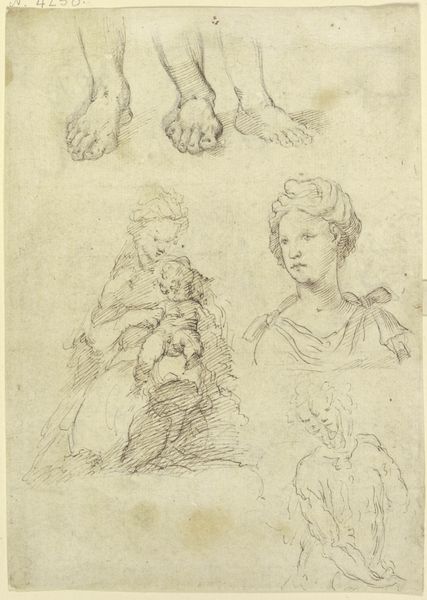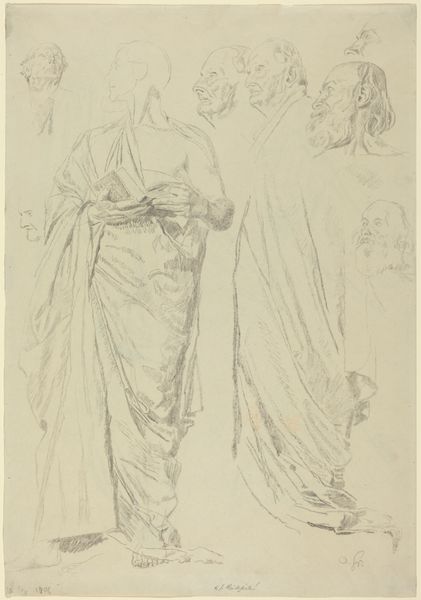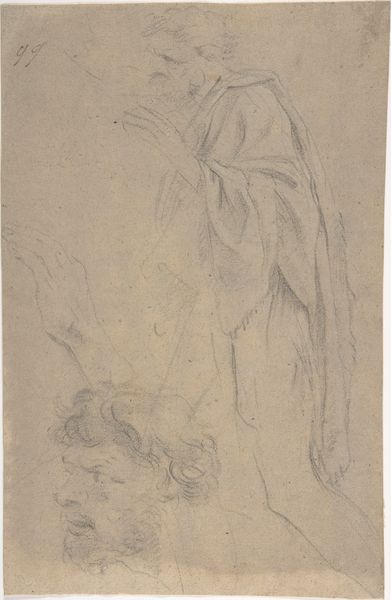
drawing, paper, pencil
#
drawing
#
figuration
#
paper
#
pencil
#
academic-art
Copyright: Public Domain: Artvee
Curator: This sheet of figure studies comes to us from the hand of Joshua Reynolds, related to Raphael’s “Disputation.” Reynolds was deeply engaged with the Italian Renaissance masters and we see his reflection in his admiration here. Editor: There’s a quiet solemnity to these figures. They’re rendered with such delicate lines, it feels like peeking into a private, thoughtful moment. Curator: Reynolds lived and worked in a London undergoing massive social and political change. As such, for Reynolds and other members of the Royal Academy, antiquity held social value, providing both models for modern British art and a moralising dimension too. Editor: Looking closely, I see different archetypes represented in these figures, like an old scholar in deep concentration, and another with arm outstretched, as though addressing the viewer. Are these supposed to signify particular apostles, saints or philosophers perhaps, their gestures indicating their roles within a larger narrative? Curator: Reynolds was really striving for academic refinement. These figures, sketched in pencil on paper, clearly exemplify the value he saw in classical compositions and a grand manner in history painting that was central to his artistic and intellectual project. It was a style that resonated deeply with his patrons and British society broadly, seeking stability during rapid change. Editor: Stability is a perfect word. The poses feel timeless and very grounded. They could symbolize wisdom, contemplation, perhaps the pursuit of divine knowledge? They speak to a deep connection with classical tradition that's both reassuring and profoundly human. Curator: Reynolds found this type of imagery particularly useful as visual shorthand for ideas about national identity at the time. Art that promoted virtues rooted in European history provided an ideal setting for modern Britons, whose ancestral claim on high civilization Reynolds worked tirelessly to cement. Editor: So, Reynolds not only studied Renaissance art, but he actively re-presented it as a template for social virtue, almost as if staging a grand, continuous pageant through British society itself. That's a heavy task for a sketch! But then it testifies to art's purpose beyond the aesthetic realm. Curator: Absolutely. These sketches underscore the role of institutions like the Royal Academy in using art for the benefit of the State. Editor: In a way, these quiet sketches shout about art and culture’s political role louder than any history painting could. Curator: A good point to consider in understanding how Reynolds helped shape a certain sense of British cultural identity. Editor: Yes, the resonance of symbolism within cultural contexts truly brings the image alive.
Comments
No comments
Be the first to comment and join the conversation on the ultimate creative platform.
